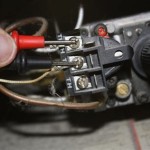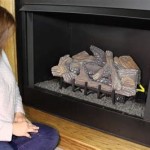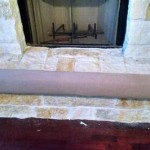Installing an Air Conditioner in a Fireplace: Considerations and Steps
The concept of installing an air conditioner within a fireplace opening presents both potential benefits and significant challenges. While the idea might seem appealing as a way to utilize an existing, often unused space, careful consideration must be given to factors such as venting, aesthetics, efficiency, and safety. This article outlines the complexities of this type of installation, providing a comprehensive overview of the steps, potential issues, and necessary precautions.
Before undertaking any installation, a thorough assessment of the fireplace structure is crucial. Fireplaces are designed for a specific purpose – controlled combustion of materials. This design inherently differs from the ventilation and operational requirements of air conditioning units. Understanding these differences is paramount to a successful and safe installation.
Assessing Fireplace Suitability and Local Regulations
The first step involves determining if the fireplace is structurally sound and suitable for modification. This includes inspecting the firebox, chimney, and surrounding masonry for cracks, weaknesses, or damage. A qualified chimney sweep or structural engineer should conduct this assessment to ensure the integrity of the fireplace. Any necessary repairs must be completed before proceeding with the air conditioner installation.
Furthermore, local building codes and regulations regarding fireplace modifications must be researched and adhered to. Many jurisdictions have specific rules about altering fireplace structures, which may require permits and inspections. Failure to comply with these regulations can result in fines and mandatory removal of the installation.
The size and type of fireplace also influence the feasibility of the project. Small fireplaces may not have sufficient space to accommodate even a compact air conditioning unit, while larger fireplaces might present venting challenges due to the chimney design. The depth and width of the firebox, as well as the height of the chimney, are key dimensions to consider.
Finally, consider the aesthetics. The installation of an air conditioning unit within a fireplace will undoubtedly alter the appearance of the fireplace. Careful planning is required to ensure the installation blends in with the surrounding decor and does not detract from the overall aesthetic appeal of the room. This may involve designing a custom enclosure or choosing an air conditioner with a visually appealing design.
Selecting the Right Air Conditioning Unit and Venting Options
Choosing the appropriate type of air conditioning unit is critical to the success of this project. Window air conditioners are generally not suitable due to their design and venting requirements. Portable air conditioners, mini-split systems, or specialized ductless units are more likely candidates, though each presents unique challenges.
Portable air conditioners require venting to the outside to exhaust hot air. While the fireplace chimney might seem like a convenient venting option, it's crucial to understand that chimney flues are designed for the upward flow of hot combustion gases. Introducing the exhaust from a portable air conditioner, which is at a lower temperature and may contain moisture, can negatively impact the chimney lining and potentially lead to condensation and deterioration.
Mini-split systems offer a more efficient and adaptable solution. These systems consist of an indoor unit and an outdoor unit, connected by refrigerant lines. The indoor unit can be mounted within the fireplace opening, while the outdoor unit is placed outside the building. This arrangement allows for efficient cooling without relying on the chimney for venting. However, the refrigerant lines need to be carefully routed and concealed, and the outdoor unit must be placed in a suitable location that meets noise and aesthetic requirements.
Ductless air conditioning units, similar to mini-splits, offer a sleek and efficient cooling solution. These units are designed to be mounted on walls and require minimal ductwork, making them a good option for situations where traditional ductwork is not feasible. When considering this option, ensure the existing fireplace opening can be adequately sealed around the unit to prevent air leaks and optimize cooling efficiency.
Regardless of the type of air conditioning unit chosen, proper insulation and sealing are crucial to prevent air leaks and maximize energy efficiency. Gaps around the unit should be sealed with high-quality sealant, and insulated panels can be used to fill any remaining voids within the fireplace opening.
Safety Considerations and Installation Procedures
Safety is paramount when installing an air conditioner in a fireplace. Several potential hazards must be addressed, including electrical safety, fire safety, and carbon monoxide risks. A qualified electrician should handle all electrical connections to ensure compliance with local codes and prevent electrical hazards.
The fireplace chimney must be thoroughly cleaned and inspected before any installation. Remove any accumulated soot, creosote, or debris to prevent potential fire hazards. If the fireplace is still used for burning wood, consider installing a separate chimney liner specifically for the air conditioner exhaust to prevent interference with the wood-burning function.
Carbon monoxide poisoning is a serious risk associated with fireplaces. Ensure that the chimney flue is not obstructed and that there is adequate ventilation in the room. Install carbon monoxide detectors near the fireplace and in other areas of the home to provide early warning of any potential leaks.
The installation process will vary depending on the type of air conditioning unit chosen. For portable air conditioners, the venting hose must be securely connected to the unit and routed through the chimney or another suitable opening. Ensure the hose is properly insulated to prevent heat loss and condensation. For mini-split and ductless units, the indoor unit should be securely mounted within the fireplace opening, and the refrigerant lines should be carefully routed and concealed. A professional HVAC technician should handle the installation of these systems to ensure proper refrigerant charging and system performance.
Once the air conditioner is installed, regularly inspect the unit and the surrounding fireplace structure for any signs of damage or deterioration. Check for air leaks, water leaks, or unusual noises. Clean the air filters regularly to maintain optimal performance and prevent the buildup of dust and allergens.
In conclusion, installing an air conditioner in a fireplace is a complex project that requires careful planning, thorough assessment, and adherence to safety regulations. While it can be a viable option for utilizing an unused space, it's crucial to consider the potential challenges and ensure that the installation is performed by qualified professionals.
Consider alternate options such as window units, through the wall units, or even central air installations as they may be a better option depending on the specific circumstances of the home.

Air Conditioner In Fireplace How To Install

Install Air Conditioner In Fireplace Remake Hd

How To Install A Portable Air Conditioner 10 Steps

Pin On Funny Interesting Hvac Boiler S

Remove Fireplace Window Air Conditioner Really

Why Get A Fireplace Insert Wood Gas Inserts In Tn Al

What To Do About Wood Burning Fireplaces And Indoor Air Quality Vito Services

Fireplace Insert Installation Step By Forbes Home

Heating And Cooling Installation Options 3 Choices B C Comfort Fireplace Hvac Repair

What Influences Air Conditioner Location Daikin
Related Posts








